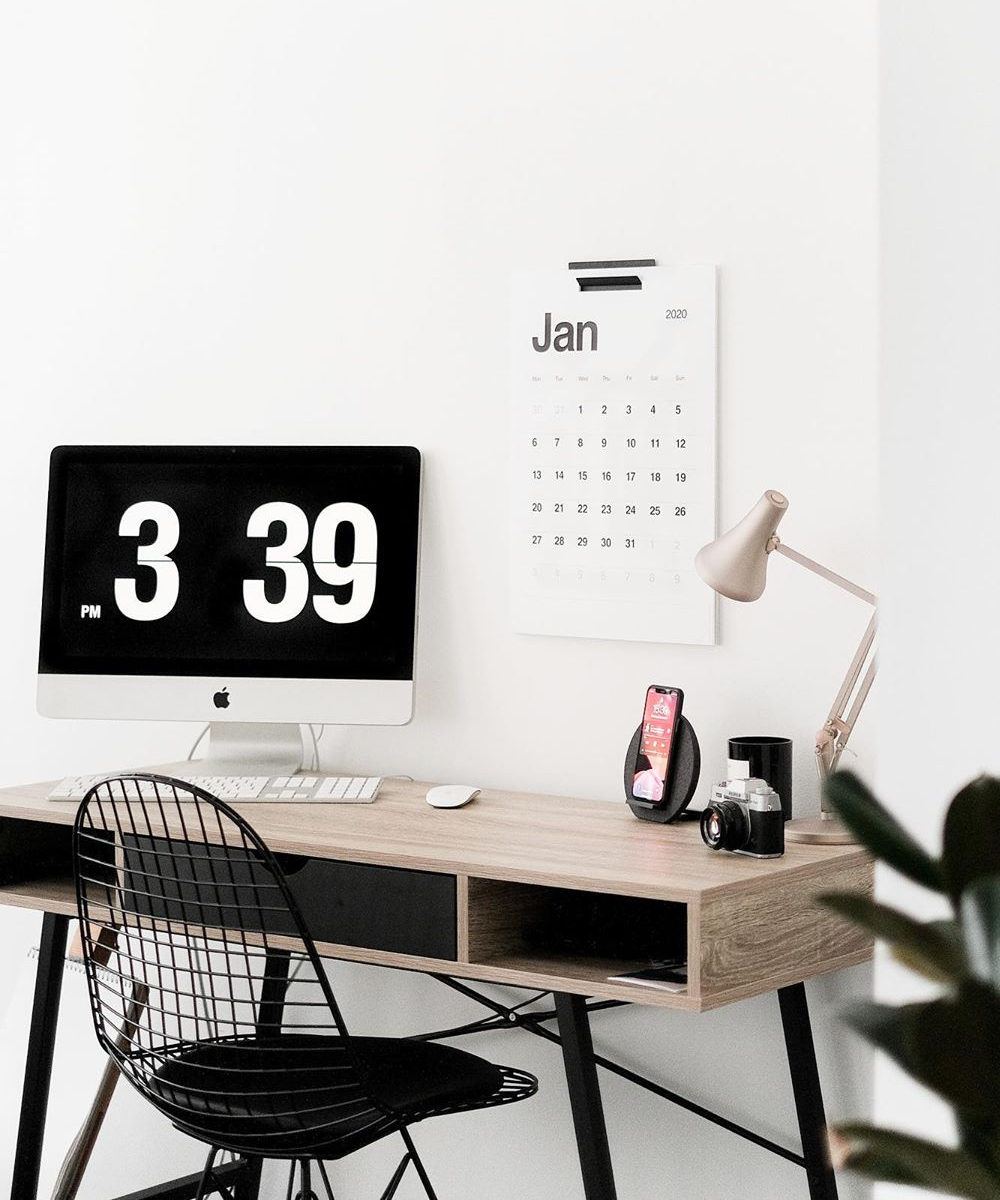
Amid the recent COVID-19 pandemic, working from home has become an unexpected and inevitable reality for many working professionals. While freelancers and work-from-home (WFH) veterans may have their daily workday down to a science, the average working professional must quickly adapt to a new routine and an at home-office, while maintaining the same productive workflow.
With the absence of your typical social cues like getting ready for the day, commuting to the office, and interacting with coworkers during breaks, it can be difficult to create boundaries between personal life and work.
To help mitigate the stress of transitioning your home into your office, here are 7 tips to cultivate a successful work-from-home routine.
Set a Schedule and Stick to it
Without the daily indicators of physically clocking in and out, or seeing your coworkers trickle away at the end of the day, it becomes exceedingly difficult to start working or better yet, know when you’ve been working overtime. To maintain a work-life balance, try to set a time to both start and end your workday, and stick to it. If time-blocking works better for you, then schedule mini sprints for each task and make sure the total time equals the same number of working hours each day. Without your colleagues asking you to grab coffee and lunch, be sure to schedule time for that lunch break and those two 15-minute breaks too.
Use Your Commute to Get in the Zone
Your daily commute is mentally and literally your transition from home to work. With the absence of a physical office to commute to and from, comes a chunk of time that can be used to your advantage. Rather than sleeping in (unless absolutely needed), take the extra time to mentally and physically get in the zone. Listen to a new podcast, read a chapter in a book, meditate, or exercise. Taking a few minutes to exercise can help release endorphins to improve the functions of the brain that help you focus and prioritize. Whatever best stimulates your mind, invest in those extra 30 minutes to an hour to set yourself up for a productive day.
Create a Separate Workspace
Whether it’s an office room with a closed door or a specific corner in a studio, dedicate a workspace that is away from your bedroom. As the line between your office and home begins to blur, differentiating your environments for work and leisure can alleviate some stress from the sudden transition.
With hours to spend at your new office, take some time to design a workspace that cultivates creativity and meets your specific needs. Prevent back pain and reduce housekeeping distractions by maintaining a clean, minimal ergonomic desk setup.
Design Your Daily Uniform
With an office only a couple steps away and the lack of face-to-face interactions, you are more capable of skipping the shower to get straight to work. At a minimum, maintain personal hygiene and switch out of your pajamas. Even if you don’t plan on seeing anyone, a good way to feel like you are going to work is to look like you are going to work. And although this does not necessarily mean dressing business casual, take the time to design a daily uniform that sets you up for success.
Eliminate Distractions
Identify the items in your home that distract you the most and extract them from your new office. Whether it’s the TV, social media, family, housemates, or that pile of clothes you were supposed to fold 3 weeks ago, make it easier to hack your everyday WFH setup and treat it like your new normal. Turn off notifications, unplug the TV, close the door, log off social media, inform your housemates or family of your “Do Not Disturb” hours. Know yourself and your systems by actively distancing and disconnecting from anything that can disrupt your workflow.
Take Thoughtful Breaks, Frequently
In addition to your lunch break, make time for short breaks and spend them in their entirety. With the recent recommendations to self-quarantine and practice social distancing, it’s easy to avoid people and going outside all-together, which in turn can result in feelings of isolation and loneliness. Use mini breaks to get some fresh air and take a walk outside. Exposure to direct sunlight not only releases hormones to help you sleep better, but also strengthens your immune system. Minimize feelings of loneliness by taking the initiative to catch up in group texts, phone a friend, or engage in social media. Use your breaks to keep your mental health in check and stay in touch with other people working from home.
Over-communicate, by Voice and Words
The absence of face-to-face conversation, calls for over-communication in the digital world and a mastery in the art of clear and concise writing. With meetings being held on screen and work being completed in solitude, it is crucial to remind your boss that you still exist and that you are putting in the work. Announce yourself and actively participate in video conferences. While it may be standard to stay muted on a conference call, have something to say when it’s time to hear your thoughts. Log your accomplishments daily, update your manager on your progress, and check on enterprise goals. Be mindful of giving feedback but also provide words of encouragement to your coworkers and managers in this time of crisis.
